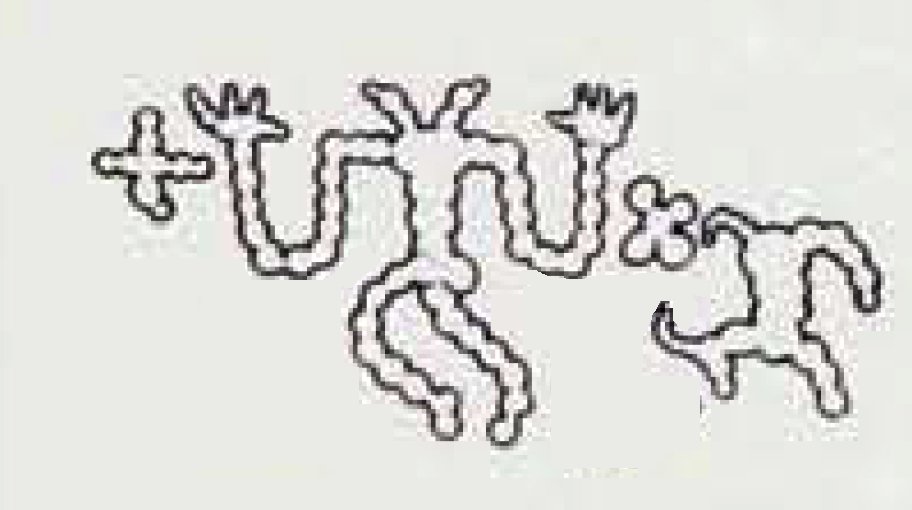
Thread: Another puzzle from the Vače Situla, an ornamented Early Iron Age (5th c. BC) Illyrian ritual vessel (situla) found in Slovenia. Here we see the "dude dressed in white" being driven in a "bird chariot" with one bird pointing forward and the other backward... 

Who is this "dude dressed in white"? Why is he driven in "bird chariots"? What is the symbol under the chariots? The Sun?
The same dude is depicted sitting on a throne holding a scepter with two bird heads facing away from each-other...Why?
The same dude is depicted sitting on a throne holding a scepter with two bird heads facing away from each-other...Why?
https://twitter.com/serbiaireland/status/1364260563317055491
Originally I thought that maybe this is somehow related to the two headed eagle dude found in Central Asia...
oldeuropeanculture.blogspot.com/2020/03/double…
oldeuropeanculture.blogspot.com/2020/03/double…

This dude is the thunder god, basically deified vulture which has two heads because the local vultures perform synchronized flying mating routines at the beginning of the rain season...Which from the ground look like two headed eagles
oldeuropeanculture.blogspot.com/2020/07/fluffy…


oldeuropeanculture.blogspot.com/2020/07/fluffy…



But maybe this Illyrian bird iconography has nothing to do with vultures. The bird definitely doesn't look like a vulture. It is a raptor though. But which one...
Enters this cool dude: The short-toed snake eagle (Circaetus gallicus), a medium-sized bird of prey, found throughout the Mediterranean basin, into Russia and the Middle East, and parts of Western Asia, and in the Indian Subcontinent and also in some Indonesian islands... 

This eagle, as its name says has short toes 🙂 And eats snakes. And in Europe, it is a migratory bird, leaving for Africa in Sep/Oct and returning in Apr/May...
oldeuropeanculture.blogspot.com/2020/08/eagle-…
oldeuropeanculture.blogspot.com/2020/08/eagle-…

Remember that snakes are solar animals. They are in our world when sun is in our world (hot part of the year) and they are in the underworld when sun is in the underworld (cold part of the year)
oldeuropeanculture.blogspot.com/2020/01/enemy-…
oldeuropeanculture.blogspot.com/2020/06/the-ch…
oldeuropeanculture.blogspot.com/2020/06/bactri…
oldeuropeanculture.blogspot.com/2020/01/enemy-…
oldeuropeanculture.blogspot.com/2020/06/the-ch…
oldeuropeanculture.blogspot.com/2020/06/bactri…

Which is why in Slavic mythology, dragon, always breathes fire. He is the symbol of destructive sun's heat. And which is why in Slavic languages, the word for dragon "zmaj" is masculine form of "zmija", snake.
oldeuropeanculture.blogspot.com/2020/01/dragon…
oldeuropeanculture.blogspot.com/2020/01/dragon…

And why the oldest dragons, Mesopotamian ones, have snake heads. 7 snake head, for 7 hot, dry summer months...
oldeuropeanculture.blogspot.com/2020/07/seven-…
oldeuropeanculture.blogspot.com/2020/07/seven-…

So this snake eating eagle disappears when the the sun goes to the underworld followed by snakes 🙂 and reappears when the sun returns from the underworld followed by snakes...
And the only time you can see this amazing scene of eagle fighting snake is during summer and autumn...Beginning from Apr-May and ending Sep/Oct.
Now remember my article about migratory birds and their significance in Slavic mythology? oldeuropeanculture.blogspot.com/2017/01/leto.h…

Now remember my article about migratory birds and their significance in Slavic mythology? oldeuropeanculture.blogspot.com/2017/01/leto.h…


And how they are directly linked with the departure of Jarilo (pronounced Yarilo), the sun god to the land of the dead in the autumn, and his return from the land of the dead in the spring?
To the point where the word leto (summer, year) can be derived from let (flight) of the migratory birds...
So who is this dude dressed in white, on an Illyrian situla, being driven in the chariot with two birds pointing in two opposite directions and holding a scepter with with two birds pointing in two opposite directions (departure and return of migratory birds)??? I wonder...
No suggestions? Well Belenus (Belinus and Bellenus), a sun god from "Celtic" mythology, whose name can be derived from "bel", Slavic word for white, making him the equivalent of the Slavic Belbog (White god)???
"The historically favoured interpretation of the name is a "bright/shining one," from a Proto-Indo-European root *bhel (to shine)" en.wikipedia.org/wiki/Belenus
Belenus was associate with horses...Just like Svetovid, Slavic sun god who was also associated with horses. White horses, which were kept in his temples...I explained the reason why solar deities are linked to horses here
https://twitter.com/serbiaireland/status/1362492623877980161
So the guy in white, driven in a horse pulled chariot, could be Belenus (Belbog) = White god, Sun...So far could be either...But is Belenus also associated with birds?
• • •
Missing some Tweet in this thread? You can try to
force a refresh
















